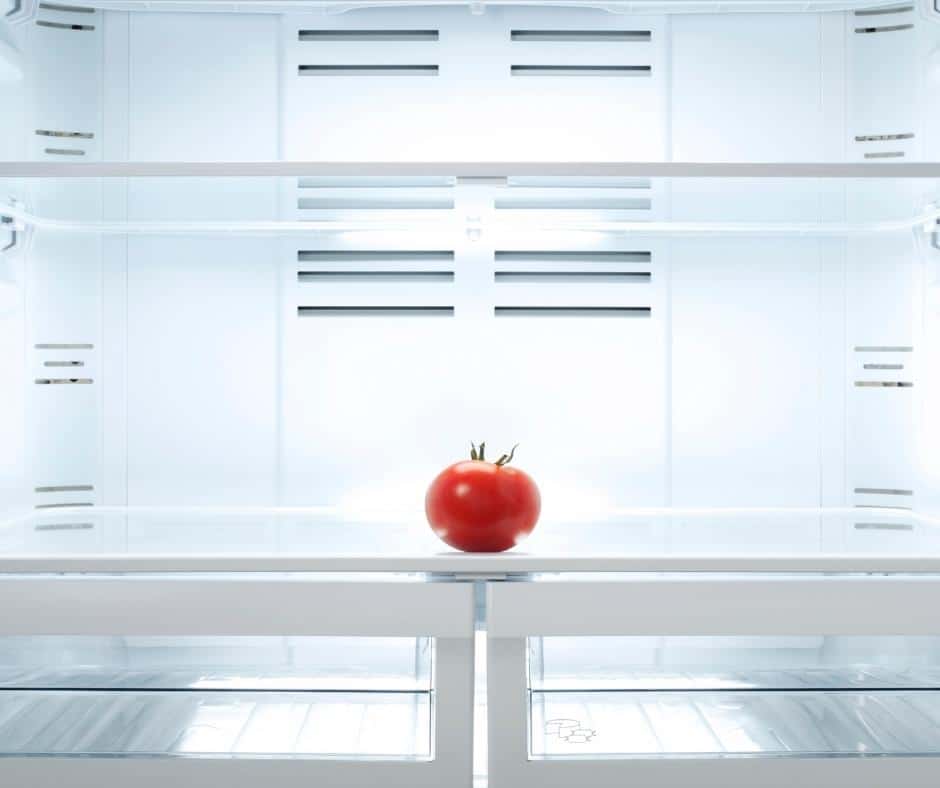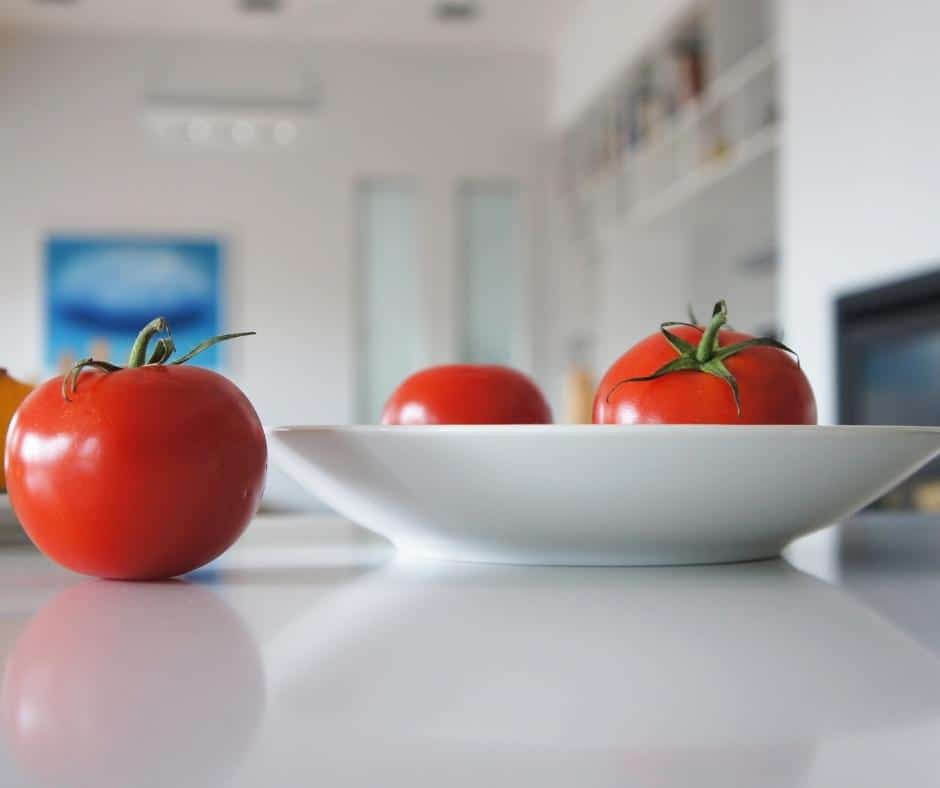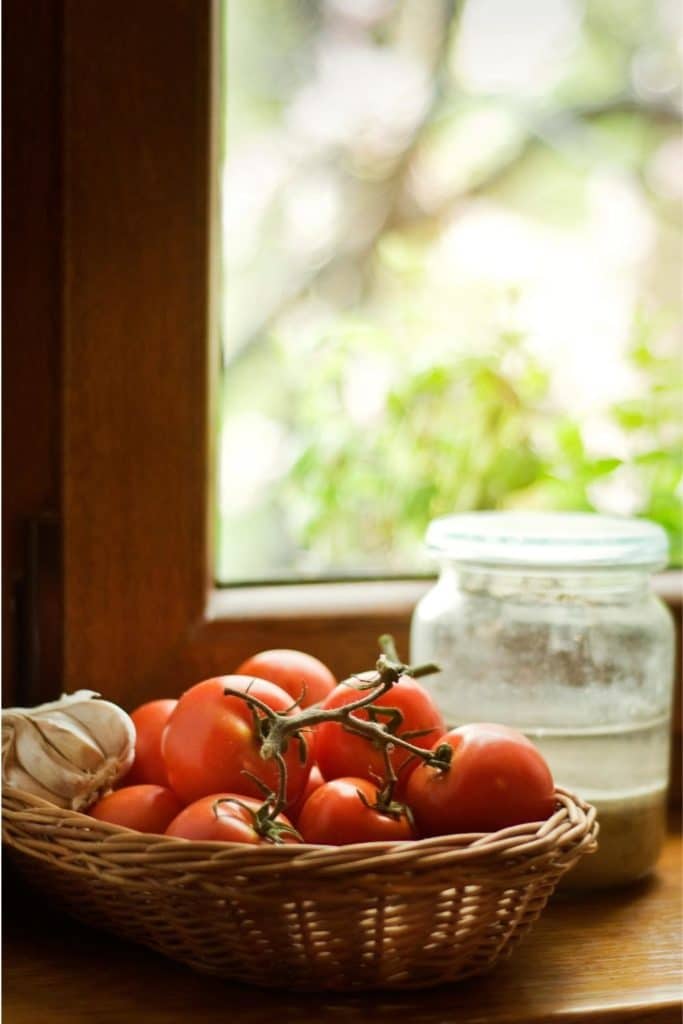
How Long do Tomatoes Last in the Fridge or on the Counter?
Tomatoes are a staple in many home gardens, and knowing how long they last is important for both harvesting and storage. While there are several factors that can affect the shelf life of tomatoes, with proper care they can last anywhere from a few days to several weeks. Keep reading to learn more about how long tomatoes last and the best ways to store them. Thanks for stopping by!
Tomatoes may bring a surprising amount of taste to any meal. From providing a delicious touch to burgers to adding taste to chili, tomatoes may be found in a variety of hearty meals.
As a result of this, you’ll most likely have several different tomatoes in your refrigerator. However, if you overdo it with tomatoes, people will want to avoid them because they can become so unpleasant.
To ensure that you do not end up with an overabundance of tomatoes in your fridge, find out how long ripe tomatoes may last.
Fortunately, as with many veggies, tomato longevity is rather simple to grasp. Tomatoes are similar to other vegetables in that they don’t keep well outside the fridge, and when tomatoes do decay, the process is generally rather apparent.
It’s important to note that the colors on a tomato will reflect whether or not it’s ripe. It might be challenging at first, but with some practice, you’ll get the hang of it. You can see why we’d want to tell people how long a tomato lasts when they buy something and don’t realize it has a best-by date of two weeks ago.
With that in mind, how long do tomatoes last? The answer is that they vary somewhat and depend on how ripe they are when you purchase them and how carefully they’re stored. Generally, if you buy tomatoes that are already ripe, they will last between one and two weeks in the fridge. However, if you have green tomatoes, they’ll last around a month when stored in a cool, dark place like a cellar.
Once harvested, tomatoes will generally ripen within four to ten days. If you bought tomatoes that were not yet ripe and want them to ripen faster, store them at room temperature and away from sunlight. On the other hand, if you bought ripe tomatoes and want them to last for a longer period of time, put them in the fridge.
While tomatoes will generally last a week or two in the fridge, they’ll only stay fresh for a few days at room temperature.
When it comes to how long tomatoes last, it’s important to remember that they should never be stored in a place that is too cold or moist because this will cause them to rot quickly.

How to tell when a tomato has gone bad
You will be able to tell if the tomatoes on your kitchen counter have gone bad if you use your natural senses. Here are the three methods for determining if your tomatoes are safe to eat.
Give it a sniff and see what you think.
If you’re not sure whether or when your tomatoes became bad, you may use your sense of smell to determine their state.
Gather all of your tomatoes on the counter, then sniff them. If they smell sour, moldy, or strange, particularly near the stem, consider throwing them out.
Examine the appearance of it.
Another method to determine whether your tomato has gone bad is to simply look at it. Bad tomatoes usually have cracks, mold spots, and discolored regions. So get rid of that tomato if you discover one!
There are many instances when I’ve cut around a little sunken or busted area in order to utilize the rest of the tomato, but don’t eat a tomato that appears to have been beaten up if your stomach is sensitive.
Tomatoes that are overripe may begin to seep and develop cracks. They’re typically best in cooked dishes at this point because the texture is soft.
Feel but do not squeeze
You may always trust your sense of touch to determine whether or not your tomatoes have gone rancid.
Give them a little pinch, but don’t squeeze them too hard. If your tomato flesh sinks in and your fingers give way to very soft tomato flesh, it’s an indication that your stored tomatoes have gone bad.
How Long Do Tomatoes Last?
Even though there are many various tomato strains available, they all have a somewhat similar shelf life. If you put fresh tomatoes on your counter and leave them alone, you can expect them to last approximately a week.
If you want to get the most out of your tomatoes, keep them refrigerated for around two weeks. Aside from this, unless you want to risk health issues, don’t eat a tomato that is more than two weeks old.
When it comes to canned tomatoes, things are a little bit different. Canned tomatoes that have not been opened may last from 12 to 18 months sitting on the shelf. This is ideal if you know you’ll need tomatoes for sauces but aren’t sure how much you’ll use at once.
Canned tomatoes are a fantastic resource, but they do have some drawbacks. The longest ingredient list on the market is still less than half an inch when fully consumed in seven days; therefore, it’s important to use all of the ingredients as soon as possible after opening the package. However, once you open up the canned tomatoes, you should make careful to consume all of them as soon as feasible since you’ll only have around seven days to use them after opening the can.
After all, tomatoes deteriorate quickly once picked, and when they’re canned, the amount of time they endure drops considerably in an opened can.
The general guideline is that if you want to get the most out of your fresh tomatoes, store them in the fridge for the full two weeks.
You can expect canned tomatoes to last for many years if you store them properly, but after opening the can, you have approximately one week to consume all of it before discarding it.

When Do Tomatoes Become Unfit for Consuming?
It’s not unusual for tomatoes to go past their expiration date, as many veggies. When this happens, it’s pretty easy to tell:
- The skin will soften. Tomatoes are relatively soft veggies, so this might be difficult to notice at first, but it should be quite distinct from when you initially purchased the tomatoes.
- When your tomatoes begin to leak liquid, they’re no longer fresh. If you’re not going to use it, though, consider ways to prepare the tomato unless you’d rather just trash it.
- Afterward, the tomato will begin to grow mold. You should now throw out the tomato since it has completely spoiled.
- If you see fruit flies on your tomatoes, this is an indication that they are not developing properly. The name “fruit fly” refers to the formation of fruit flies in a culinary context.
Fruit flies are tiny, winged insects that like to frolic around fruit and can end up inside it if you allow them. Nobody wants to consume a tomato infested with both flies on the outside and within it.
If you see fruit flies targeting your tomatoes, consider setting a water bowl with some vinegar next to the fruit basket, or wherever you’re keeping the tomatoes. The following day you’ll have a pail of water with dead fruit flies in it. Refrigerating the tomatoes may also help prevent this.
These are the most common indications that your tomatoes will go bad. Of course, there will be additional obvious symptoms as well.
- If the tomato is shriveling, has discoloration surrounding a cut in the skin, or is exhibiting significant changes in texture or color, it’s probably time to trash it.
How to Extend the Shelf Life of Your Tomatoes
Nobody loves going to the market more than they have to, because their tomatoes got rotten. Fortunately, there are a few methods for extending the shelf life of your tomatoes even if it’s only by a few days.
The most common problem with tomatoes is that they are squishy, and their insides are frequently wet. When left outside for too long, these are ideal circumstances for flies, mildew, and a variety of germs.
Freezing your tomatoes for months won’t work unless you want to risk losing the tomato’s flavor, since it takes time for them to grow and develop. With that in mind, these procedures should extend the life of your tomatoes a little bit longer.
If you want to keep the tomato longer, place it in the refrigerator instead of a fruit basket.
You should also store the tomato in the fridge drawer marked “produce,” since these containers are typically used for tomatoes. This will extend the life of your tomatoes, but keep in mind that they wilt quickly, so look for any signs of decay or age in the fruit.
If the tomato is growing mold in the drawer, as usual, just cut your losses and throw everything away.
Tomatoes should not be stored in the freezer since they retain liquid. Blanching them is a good option, but you run the risk of losing taste this way.
Blanching is a method of cooking tomatoes quickly before freezing them to retain as much flavor as possible. Freezing tomatoes is usually a more complicated procedure than just putting them in the refrigerator and monitoring them.
The variety of tomatoes you select is also essential. Although the various cultivars of tomato have similar lifespans, plum tomatoes are thought to survive longer in general. This is attributed to the fact that they have a stronger “meat” to them, which prevents mold from trying to take root in the tomato and rotting it from the inside out. If you’re buying tomatoes based on how long they’ll keep, plum tomatoes are a good choice.
How to store cut tomatoes
It’s best to only cut as many tomatoes as you plan on eating within a day or two, so you don’t have to worry about this problem. But if you find yourself in this unfortunate situation, place the cut tomatoes in an airtight container and store them in a cool, dark place.
If you want to store them in the fridge, place them in a container with some water and store them.
This will extend the shelf life of your tomatoes by a day or two.
When you’re ready to eat them, just remove them from the fridge and let them reach room temperature before consuming them.
